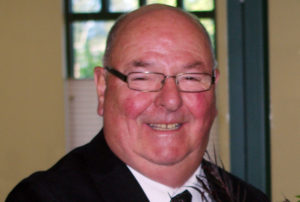Home »

Urgent and primary care centre opening in Cranbrook
A new urgent and primary care centre (UPCC) is opening Dec. 8 in Cranbrook’s Baker Street Mall, Unit 230, 1311-2nd Street.
“The new UPCC in Cranbrook will offer people better access to team-based health care and allow them to receive treatment in their community,” said Adrian Dix, Minister of Health. “Working in collaboration with community partners and with the support of local health-care teams, we are strengthening primary care services throughout the province. In Cranbrook and the region, this will mean regular, ongoing access to a team of primary care providers.”
The Cranbrook UPCC is a collaboration between Interior Health, the Ministry of Health, the Kootenay East Regional Hospital District, the East Kootenay Division of Family Practice and the Ktunaxa Nation. As part of the East Kootenay Primary Care Network, this UPCC will feature a co-located, team-based care hub, which hosts other team-based care supports from around the community and helps to strengthen the integration and co-ordination of primary care services throughout the region.

“Not only will this clinic provide improved access to health-care services for thousands of people who have been without a physician in the Cranbrook/Kimberley area, it will also decrease pressure on the emergency department at the East Kootenay Regional Hospital and free up resources for emergencies. We are proud to have contributed $1.2 million in funding for this initiative and look forward to the positive impact this clinic will have on local health-care services,” stated Dean McKerracher, Kootenay East Regional Hospital District board chair and District of Elkford Mayor.
“The Cranbrook Urgent and Primary Care Centre will be an exciting addition to the already existing primary care network in the East Kootenay. This is great news for patients who will have increased access to urgent care and for patients who are not yet attached to a family doctor or nurse practitioner,” said Dr. Shaun Van Zyl, board chair, East Kootenay Division of Family Practice.
The UPCC will serve two purposes. The first will be providing care for people experiencing non-life-threatening conditions, such as an ankle sprain or a sore throat, who need to see a health-care provider within 12 to 24 hours, but do not require an emergency department visit. The second purpose will be attaching patients to a regular primary care provider if they do not have one.
Opening with a phased approach, the centre will be staffed by approximately 15 FTE health-care providers, including nurse practitioners, registered nurse, physiotherapists and social workers.
It will offer urgent care only. From Dec. 8 -10, the centre will be open from 1:30-5:30 p.m. After that, it will open Monday to Friday from 10:30 a.m. to 5:30 p.m. As more health-care professionals are recruited, the hours of service will increase and the centre will begin offering longitudinal care.
Once fully operational by April 2022, the full team is anticipated to consist of approximately 28 full-time equivalent clinical health-care professionals, including doctors, nurse practitioners, registered nurses, mental wellness clinicians, physiotherapists, occupational therapists, social workers, Aboriginal health co-ordinators and a clinical pharmacist. When fully staffed, the UPCC will be open seven days a week, 365 days a year.
The team is expected to attach more than 5,000 patients to a consistent primary care provider at the clinic or in the community.

“The Cranbrook Urgent and Primary Care Centre will increase same-day access to local health services and will make a significant impact for patients and families living in the community and surrounding area. The care provided by family physicians, nurse practitioners, nurses and allied health professionals means there is added support for the immediate and long-term health needs of people throughout the region,” noted Susan Brown, Interior Health president and CEO.
“By incorporating culturally relevant care, including trauma-informed primary care services, the Cranbrook UPCC will strengthen the relationship and trust between Indigenous people and health-care providers, in addition to improving health outcomes for all people in the region,” said Kathryn Teneese, Ktunaxa Nation Council Chair.
Doctors of BC president Dr. Matthew Chow added: “We look forward to the integration of the Cranbrook UPCC in hopes it will strengthen primary care in the community. Doctors of BC has a strong interest in ensuring people have access to the health-care services they need. We also emphasize the importance of measures that strengthen the long-term relationships between patients and their family doctor. These relationships have been shown to improve health outcomes, help avoid preventable illness, and reduce the cost of health care.”
Michael Sandler, Nurses and Nurse Practitioners of BC executive director stated,”Nurses and nurse practitioners of B.C. are pleased to see that the knowledge, skills and expertise of the entire health-care team will be utilized to improve access to health care for all British Columbians through urgent and primary care clinics. We believe that this approach will be pivotal in ensuring B.C. families can access health-care services, and we are excited to see the opening of another urgent and primary care clinic in B.C.”
This is the 26th UPCC that has been announced under the government’s primary care strategy. Of those, seven are in the Interior Health region, including in Kelowna, West Kelowna, Vernon, Kamloops, Castlegar, Penticton and Cranbrook.
Primary care is the day-to-day health care given by a health-care provider.
Urgent primary care is the care that people need within 12 to 24 hours, for conditions such as sprains, urinary problems, ear infections, minor cuts or burns.
UPCCs are part of a comprehensive strategy to transform B.C.’s health system by bringing together and co-ordinating with health-care providers, services and programs to make it easier for people to access care, receive follow-up and connect to other services they may need.
Of the 29,119 people in the Cranbrook region, approximately 2,750, or roughly 9.4%, of patients are considered unattached according to the Ministry of Health’s attachment algorithm, the B.C. Ministry of health and Interior Health stated in a media release.
The five top identified conditions in the Cranbrook Local Health Area are hypertension, mood and anxiety disorders, osteoarthritis, chronic obstructive pulmonary disease and asthma.
Approximately 35% of visits to East Kootenay Regional Hospital emergency department in 2020-21 were triaged as relatively low acuity. Many of these visits could be dealt with in alternative settings, such as an UPCC.
People can self-refer for their urgent care needs at the UPCC. Patients can also be referred by community service providers, other health-care professionals and agencies. People are encouraged to visit their own family doctor or nurse practitioner where possible.
People can also schedule appointments. During busy periods, appointments will be prioritized based on urgency.
Patients requiring laboratory testing beyond the simple specimen collection will be provided with requisitions for lab tests to be completed at nearby laboratories.
The Cranbrook UPCC joins other local primary care clinics, which together provide primary care services to the immediate vicinity and form the East Kootenay Primary Care Network.
The East Kootenay Primary Care Network is working to attach 18,317 patients by 2022-23. The network is adding to the 33 physicians in the Cranbrook area who provide team-based care through an interdisciplinary team of allied health professionals.
e-KNOW file photo
e-KNOW







